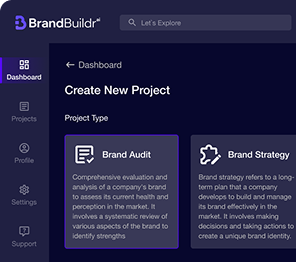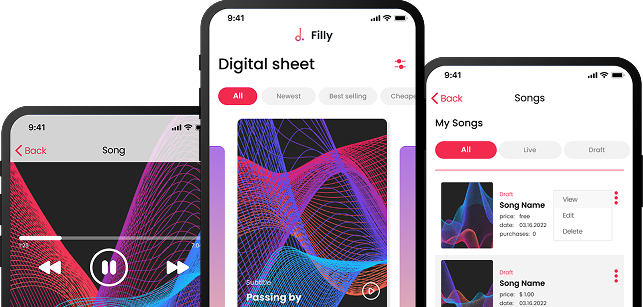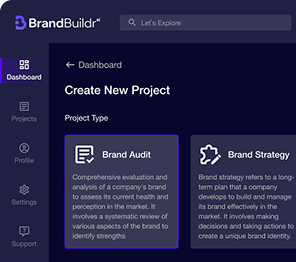In the digital age, cloud computing has become an essential component of the technology landscape, transforming how businesses operate and deliver services. Cloud computing offers a range of services that can be broadly categorized into three main models: Infrastructure as a Service (IaaS), Platform as a Service (PaaS), and Software as a Service (SaaS). This comprehensive guide delves into these cloud computing models, exploring their features, benefits, and use cases, as well as the challenges and considerations associated with each.
.avif)
Understanding Cloud Computing
Cloud computing delivers computing services — including servers, storage, databases, networking, software, and analytics — over the internet (the cloud). This model provides scalable resources, enabling businesses to innovate and operate more efficiently without the burden of managing physical infrastructure.
Cloud computing is not just a technology but a fundamental shift in how businesses operate, offering unparalleled flexibility, scalability, and innovation.
Infrastructure as a Service (IaaS)
Overview of IaaS
IaaS provides virtualized computing resources over the internet. It is the most basic cloud service model, offering essential building blocks for cloud IT, and typically includes:
- Virtual Machines (VMs): Scalable compute resources.
- Storage: Block and object storage options.
- Networking: Virtual networks, load balancers, and IP addresses.
Key Features of IaaS
- Scalability: Easily scale up or down based on demand.
- Cost-Effectiveness: Pay-as-you-go pricing model reduces capital expenditure.
- Flexibility: Users can install and manage their own software, including operating systems and applications.
- Control: Provides significant control over the infrastructure, similar to managing on-premises data centers.
Benefits of IaaS
- Reduced Costs: Eliminates the need for physical hardware and data centers, reducing maintenance and operational costs.
- Speed and Agility: Rapidly deploy new servers and resources, enabling quicker development and deployment cycles.
- Disaster Recovery: Simplifies backup and recovery solutions with geographically dispersed data centers.
- Focus on Core Business: Allows organizations to focus on core business activities rather than managing infrastructure.
Use Cases of IaaS
- Startups and SMBs: Cost-effective solutions for small businesses to scale resources as needed.
- Testing and Development: Quickly create and dismantle development and testing environments.
- Big Data Analysis: Provides the necessary infrastructure to process and analyze large datasets.
Challenges of IaaS
- Complexity: Managing and configuring IaaS environments can be complex and require skilled personnel.
- Security: Users are responsible for securing their applications and data, which can be challenging without proper expertise.
- Vendor Lock-In: Migrating workloads between different IaaS providers can be difficult and costly.
Platform as a Service (PaaS)
Overview of PaaS
PaaS provides a platform allowing customers to develop, run, and manage applications without dealing with the underlying infrastructure. This model includes:
- Development Tools: Integrated development environments (IDEs), version control systems, and collaboration tools.
- Middleware: Software that connects applications, such as databases and web servers.
- Database Management: Managed database services that handle maintenance and scaling.
Key Features of PaaS
- Development Frameworks: Pre-built components and frameworks that accelerate application development.
- Managed Services: Automated infrastructure management, including patching, updates, and scaling.
- Integration Capabilities: Tools and services for integrating with other applications and services.
Benefits of PaaS
- Faster Development: Streamlined development processes and pre-built components reduce time to market.
- Reduced Complexity: Abstracts infrastructure management, allowing developers to focus on coding and application functionality.
- Collaboration: Enhanced collaboration tools and environments facilitate teamwork among developers.
- Scalability: Automatically scales applications based on demand without manual intervention.
Use Cases of PaaS
- Application Development: Ideal for developing web and mobile applications quickly.
- API Development and Management: Simplifies the creation and management of APIs.
- Business Analytics: Provides tools for building and deploying analytics applications.
Challenges of PaaS
- Customization Limitations: May not support every custom development requirement or specialized application.
- Dependency on Provider: Heavy reliance on the provider’s services and tools can limit flexibility and portability.
- Security Concerns: Ensuring data security and compliance within a shared environment can be challenging.

Software as a Service (SaaS)
Overview of SaaS
SaaS delivers software applications over the internet on a subscription basis. Users access these applications via web browsers, with the provider managing the infrastructure and application maintenance. Examples of SaaS include:
- Productivity Software: Google Workspace, Microsoft Office 365.
- Customer Relationship Management (CRM): Salesforce, HubSpot.
- Enterprise Resource Planning (ERP): SAP, Oracle.
Key Features of SaaS
- Accessibility: Accessible from any device with an internet connection.
- Automatic Updates: Providers handle software updates and maintenance.
- Subscription-Based: Users pay a recurring fee, often monthly or annually.
Benefits of SaaS
- Ease of Use: No need for installation or complex configurations; users can start using the software immediately.
- Lower Upfront Costs: Subscription model eliminates the need for significant upfront investments in software licenses.
- Scalability: Easily add or remove users and features as needed.
- Maintenance-Free: Providers handle all technical maintenance, reducing the burden on IT teams.
Use Cases of SaaS
- Collaboration Tools: Platforms like Slack and Trello enhance team collaboration.
- Email and Communication: Gmail, Outlook.
- E-Commerce Platforms: Shopify, BigCommerce.
Challenges of SaaS
- Limited Customization: SaaS applications may not offer extensive customization options.
- Data Security: Storing sensitive data on third-party servers raises security and compliance concerns.
- Dependence on Internet Connectivity: Requires a stable internet connection to access applications.

Choosing the Right Cloud Service Model
The choice between IaaS, PaaS, and SaaS depends on various factors, including the specific needs of the organization, the nature of the applications, and the level of control and customization required.
When to Choose IaaS
- Flexibility and Control: When you need significant control over the infrastructure and customization options.
- Complex Applications: For complex applications that require specific configurations and customizations.
- Scaling Needs: When rapid scaling of infrastructure resources is essential.
When to Choose PaaS
- Speed and Efficiency: When rapid development and deployment are priorities.
- Development Focus: When the focus is on developing applications rather than managing infrastructure.
- Integration Requirements: When you need seamless integration with other services and applications.
When to Choose SaaS
- Ease of Use: When ease of use and quick deployment are crucial.
- Cost Savings: When reducing upfront costs and maintenance responsibilities is a priority.
- Standard Applications: For standard applications like email, CRM, and collaboration tools.


Hybrid and Multi-Cloud Strategies
Many organizations adopt hybrid and multi-cloud strategies to leverage the benefits of different cloud service models and providers.
Hybrid Cloud
A hybrid cloud strategy combines on-premises infrastructure with cloud services, allowing data and applications to be shared between them. This approach provides greater flexibility and control, enabling organizations to:
- Optimize Workloads: Run sensitive workloads on-premises while leveraging the cloud for scalable resources.
- Ensure Continuity: Maintain business continuity with disaster recovery solutions spanning both environments.
Multi-Cloud
A multi-cloud strategy involves using multiple cloud services from different providers. This approach helps organizations:
- Avoid Vendor Lock-In: Reduce dependence on a single provider and enhance flexibility.
- Optimize Costs: Choose the most cost-effective services from different providers.
- Enhance Reliability: Improve reliability and redundancy by distributing workloads across multiple clouds.
Future Trends in Cloud Computing
The cloud computing landscape is continually evolving, with emerging trends shaping its future.
Edge Computing
Edge computing brings computation and data storage closer to the sources of data, reducing latency and improving performance. This trend is crucial for applications requiring real-time processing, such as IoT and autonomous vehicles.
Artificial Intelligence and Machine Learning
Cloud providers are increasingly integrating AI and ML services, enabling organizations to leverage advanced analytics and automation capabilities without significant investments in hardware and expertise.
Serverless Computing
Serverless computing allows developers to build and run applications without managing servers. This model offers auto-scaling, pay-as-you-go pricing, and simplified deployment, making it ideal for dynamic and event-driven applications.
Enhanced Security and Compliance
As cloud adoption grows, providers are focusing on enhancing security features and ensuring compliance with regulations. Advanced encryption, identity and access management, and automated compliance checks are becoming standard offerings.
Choosing the right cloud model — whether IaaS, PaaS, or SaaS — can transform your business, unlocking new potential for efficiency and growth.
Conclusion
Cloud computing, with its IaaS, PaaS, and SaaS models, offers a versatile and scalable solution for businesses of all sizes. By understanding the features, benefits, and challenges of each model, organizations can make informed decisions and leverage the cloud to drive innovation, efficiency, and growth.
While IaaS provides the foundational infrastructure for maximum control and flexibility, PaaS offers a streamlined platform for rapid development and deployment, and SaaS delivers user-friendly applications with minimal management overhead. The choice between these models depends on specific business needs, application requirements, and strategic goals.
As technology continues to advance, hybrid and multi-cloud strategies, along with emerging trends like edge computing, AI, and serverless computing, will further enhance the capabilities and benefits of cloud computing. By staying informed and adapting to these changes, organizations can harness the full potential of the cloud to stay competitive in an increasingly digital world.
FAQ
What is cloud computing?
Cloud computing is the delivery of computing resources such as servers, storage, databases, networking, and software over the internet. It allows organizations to scale resources on demand without managing physical infrastructure.
What is Infrastructure as a Service (IaaS)?
IaaS provides virtualized computing resources like servers, storage, and networking. Users manage operating systems and applications, while the cloud provider handles the underlying hardware.
What is Platform as a Service (PaaS)?
PaaS offers a managed platform for building, testing, and deploying applications. It abstracts infrastructure management and provides development tools, frameworks, and runtime environments.
What is Software as a Service (SaaS)?
SaaS delivers fully functional software applications over the internet. Users access the software via a browser, while the provider manages infrastructure, updates, and maintenance.
How do organizations choose between IaaS, PaaS, and SaaS?
The choice depends on control requirements, development flexibility, scalability needs, and operational responsibility. Some organizations use a mix of all three models.
What are the main benefits of cloud computing?
Key benefits include scalability, cost efficiency, flexibility, faster deployment, improved collaboration, and enhanced security when properly managed.
Heading 1
Heading 2
Heading 3
Heading 4
Heading 5
Heading 6
Lorem ipsum dolor sit amet, consectetur adipiscing elit, sed do eiusmod tempor incididunt ut labore et dolore magna aliqua. Ut enim ad minim veniam, quis nostrud exercitation ullamco laboris nisi ut aliquip ex ea commodo consequat. Duis aute irure dolor in reprehenderit in voluptate velit esse cillum dolore eu fugiat nulla pariatur.
Block quote
Ordered list
- Item 1
- Item 2
- Item 3
Unordered list
- Item A
- Item B
- Item C
Bold text
Emphasis
Superscript
Subscript





















.avif)



.avif)

.avif)


